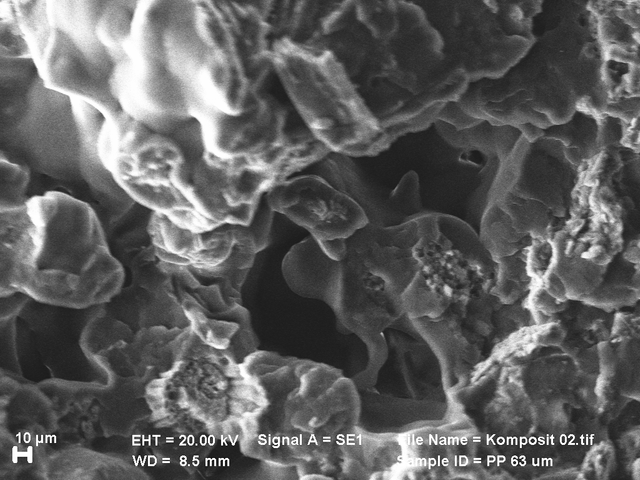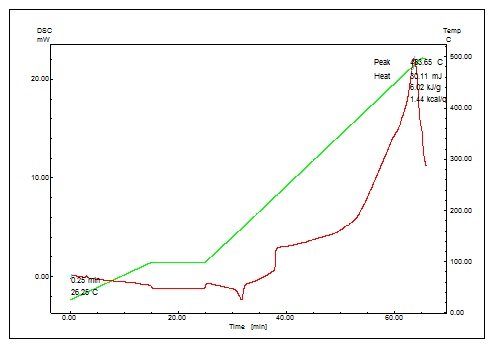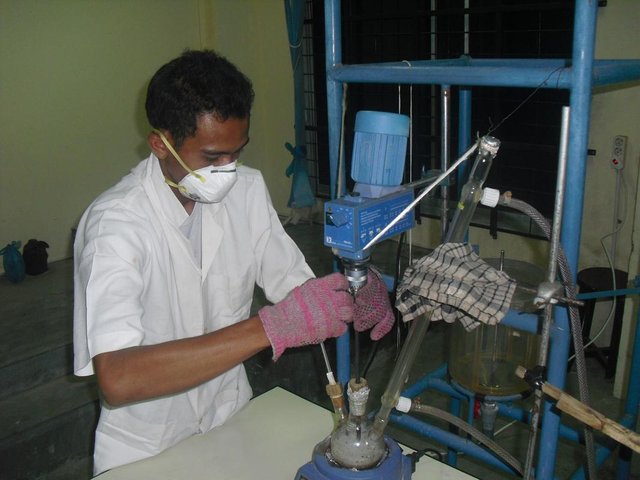Recycling of Plastic Waste and Empty Look of Palm Oil as Composite Board of Aircraft Cabin
Fiber Composites with Polymers
Polymer composites are an alloy of polymeric materials that are widely used in industry because they are lightweight, easy to process and allow for design flexibility. Composite polymers, comprising polymer and filler phases as additional components that generally perform well in terms of physical properties, mechanical properties, low cost and easy processing. Additional components or fillers, may result in properties for strengthening or not reinforcing a particular type of material. The reinforcing properties of the material with the help of filler will be useful in improving the physical properties, mechanical properties, thermal resistance and abrasion resistance while non-strengthening fillers can lower cost, modify density, improve barrier properties or change color and so on.
With Multiple Analysis Results:
- Surface Analysis of Micro Composite Structures With SEM Test

Observations through Scanning Electron Microscope (SEM) were performed to see changes in composite surfaces or comparative morphology of composite boards with added MAPE. The results of surface morphological analysis by SEM can provide information about the shape and alteration of a material under test. In principle when there is a change in a material such as fractures, curves, and structural changes then the material tends to change energy. The altered energy can be emitted, reflected, and absorbed and converted into electron waves which can be captured and read in the SEM image.
- Mechanical Properties of Micro Composites With Impact Testing

An increase in the impact strength value occurred in a 63 μm filler composite after heating at 170 ° C. The absence of a clear trend in heat treatment at the impact value is strongly related to the complexity of polymer crystallization with the presence of fiber as an amplifier in the polymer.
The picture above shows that the bigger the filler size the smaller the impact value, but at 106 μm filler size in the 70: 30 ratio the impact value is bigger than the size of filler 90 μm, it happened because of the adhesion or binding of interam between the matrix with the good fiber at 106 μm filler size as described (Khalil, 2004). Although strong fibers are used as reinforcing agents in a composite, but if the formed adhesion is weak, the resulting composite strength will be weak.
- Mechanical Properties With Pull Test

The data obtained, can be seen that the composite board has a larger filler size then the value of the composite strength of the composite board is getting smaller. This occurs because in the mixing process, finer filler sizes will occur uniformly homogeneous mixing and vice versa, larger filler sizes will experience uniformity in the mixing process.
The value of tensile strength and impact obtained is due to the interaction between polypropylene and α-cellulose matrix of Palm Oil Bunches modified with MAPE as coupling agent so that it reacts chemically, thus increasing the surface adhesion between cellulose and matrix. This fact is supported by the results of previous research which states that the use of coupling agent has a very strong relationship with flexibility and flexibility, because it can improve the mechanical properties of the composite (Hwang, 2007).
- Analysis of Physical Properties (Melting Point and Decomposition Temperature) with Differential Scanning Calorimetry (DSC)
Testing the physical properties of these polymer composite materials used Differential Scanning Calorimetry (DSC) tool to determine melting point and decomposition temperature.
Melting point describes the phase change from solid to liquid without changing the composition and the melting temperature is the critical temperature in which the polymer loses its overall crystallinity. The composite material decreases the melting point as the addition of this fill material occurs because the polymer chains are physically degraded, in the sense that the polymer chains are pressed by the filler thus breaking the polymer molecule chain bond.

Decomposition temperature has a sense of temperature when the material starts to change the composition of the constituent materials. In Table 4.3 it can be seen that the decomposition temperature decline is not so significant, it may be that the addition of the filler composition (Empty Point of Palm Oil) less influence the decomposition temperature. Compared to the decomposition temperature of both polypropylene and 63 μm composite materials with polypropylene and filler size of 90 μm, it does not show any significant difference which means no significant difference, due to the addition of the filler material (Empty Point of Palm Oil) less affect the condition of both composites
- Fourier Transform Infrared (FT-IR) Spectroscopy Tests

To know the effect of chemical treatment on the chemical composition of natural fibers is done by using FTIR analysis. FTIR uptake from natural fiber materials is identified as a combination of three main components of natural fibers (stacking each other). So the functional group specification of natural fibers due to chemical treatment is only emphasized on the existence of specific groups of each constituent.
Analysis of the IR spectrophotometer was used to find out the groups formed from the resulting sample and also to predict the polymerization reaction occurring. This analysis is based on an analysis of the characteristic peak wavelengths of a sample. The wavelengths of the peaks indicate the presence of a particular functional group present in the sample, since each functional group has a specific characteristic peak for a particular functional group.
Composites are made up of two different types of materials:
- Reinforcement, which has less ductile properties but is more rigid and stronger, the fiber as a reinforcing element greatly determines the mechanical properties of the composite because it transmits the load distributed by the matrix. Orientation, size and shape as well as fiber materials are the factors that affect the mechanical properties.
- Matrix of binder or fiber foil in composite material, generally more ductile but has lower strength and lower regulation. Matrices are made of polymers (eg, polyethylene), ceramic and metallic carbon (aluminum, titanium). The matrix should ideally serve as a fiber sheathing of inter-fiber damage in the form of abrasion, environmental protection (chemical, moisture attack), fiber support and magnifiltration, load transfer, inter-fiber, and adhesive and remain physically and chemically stable after the process.

The End
@maulizar
Chemicalengineering
bereh ngoen........
good job..........
:D
oke bg...
thanks you... :D